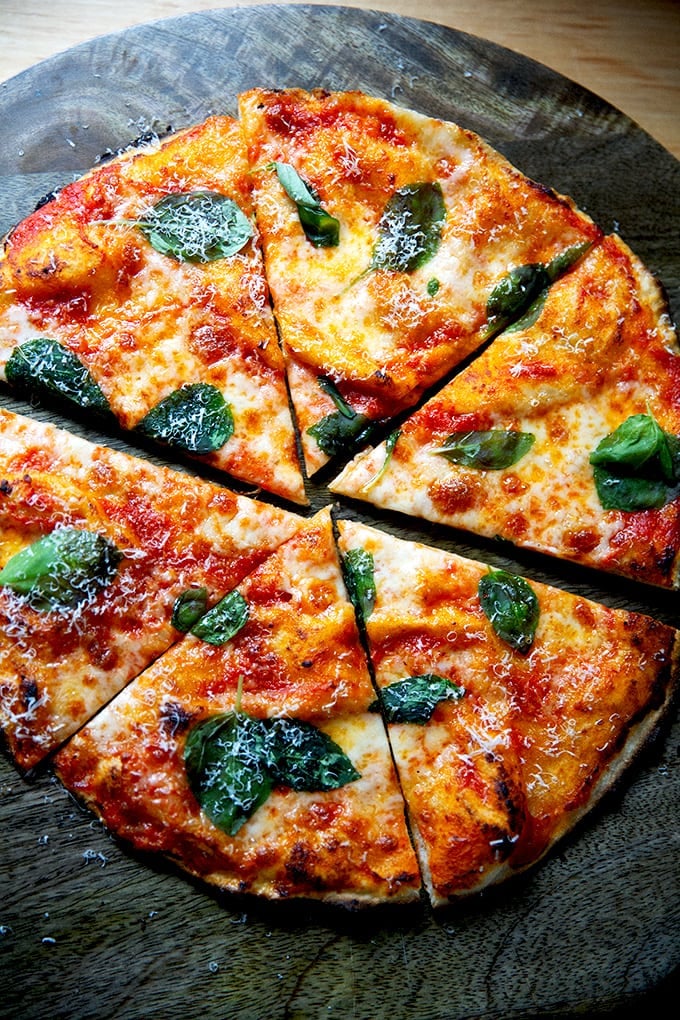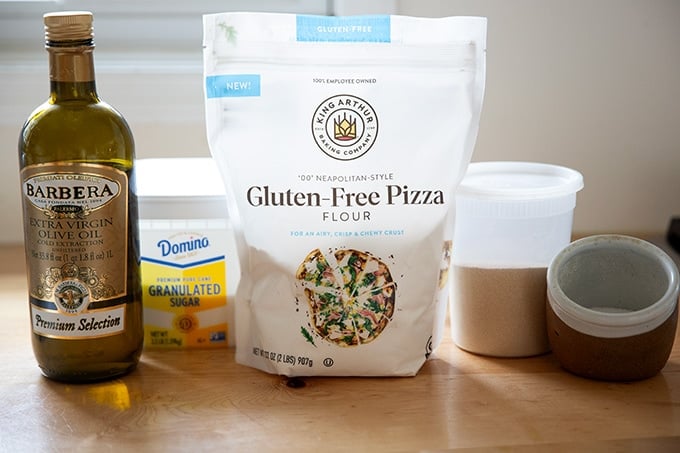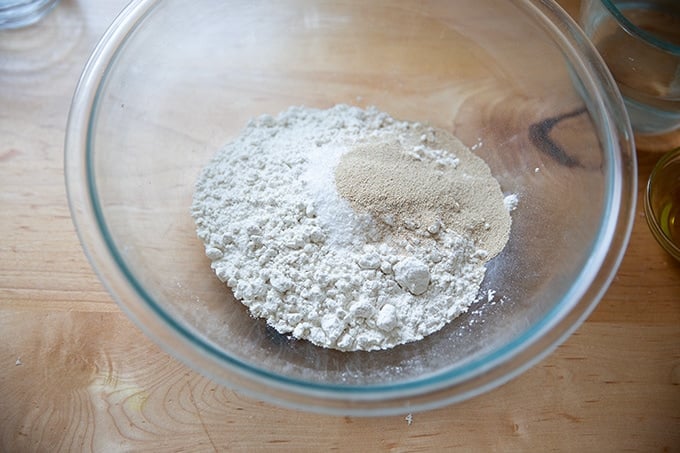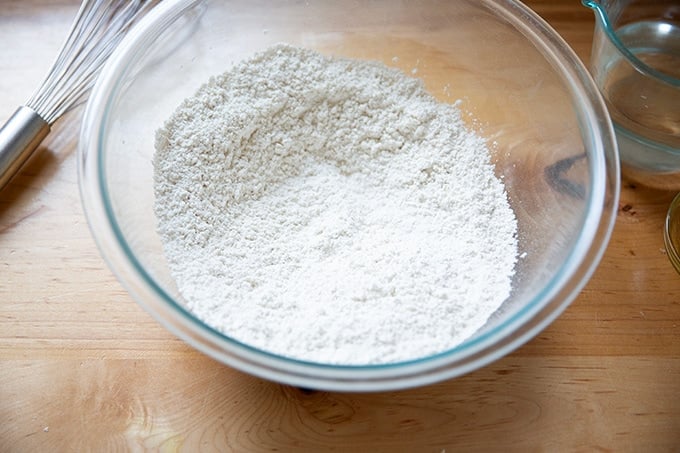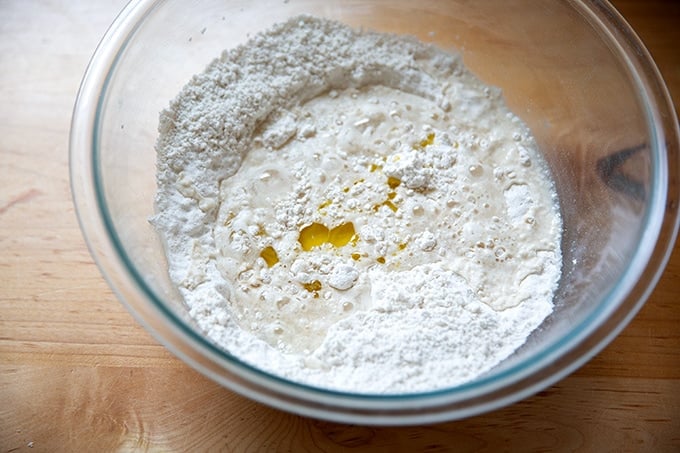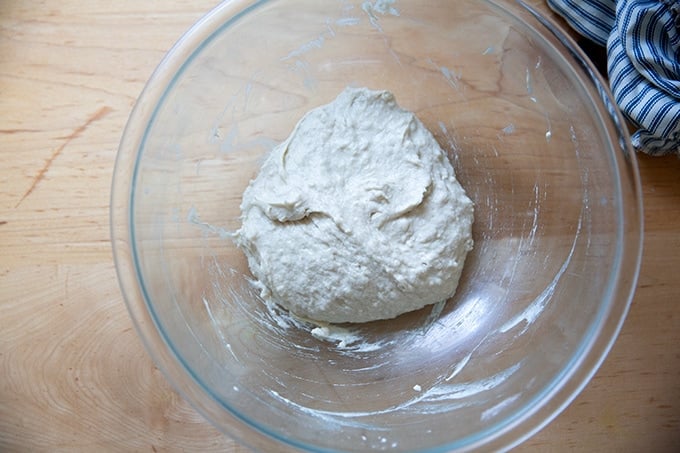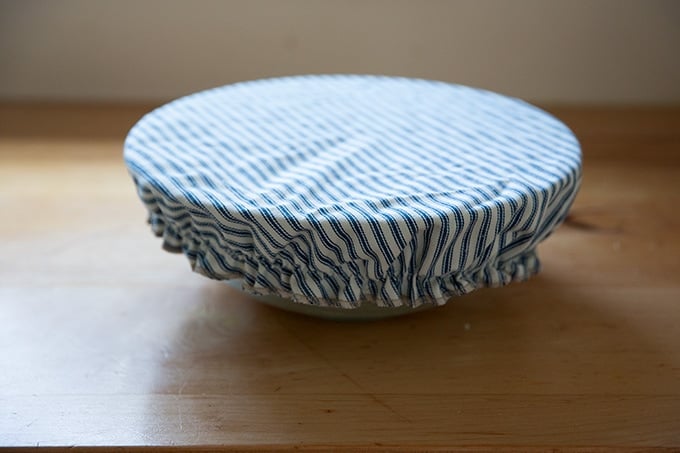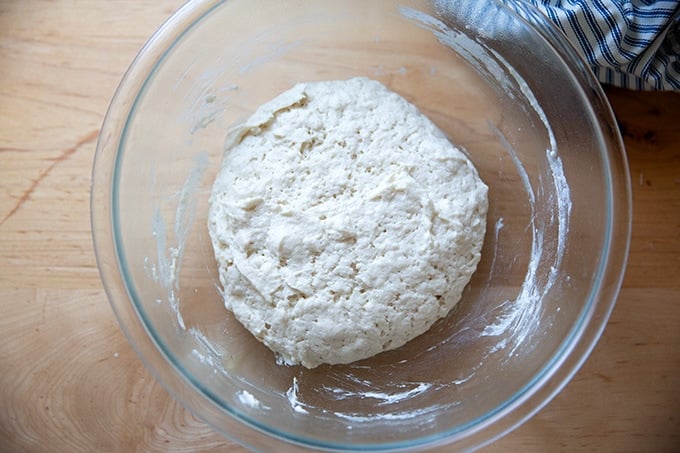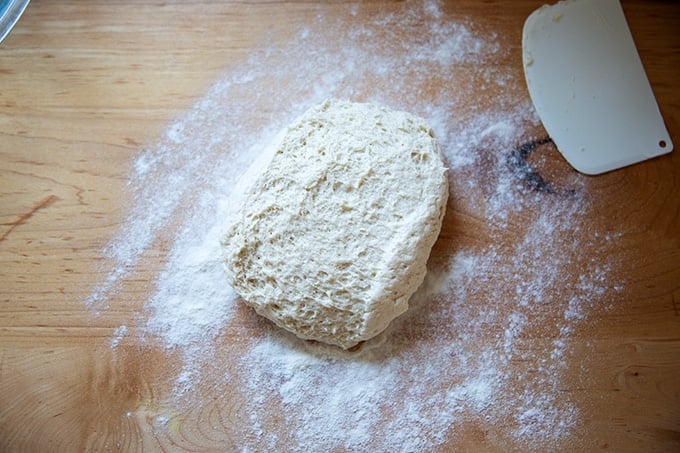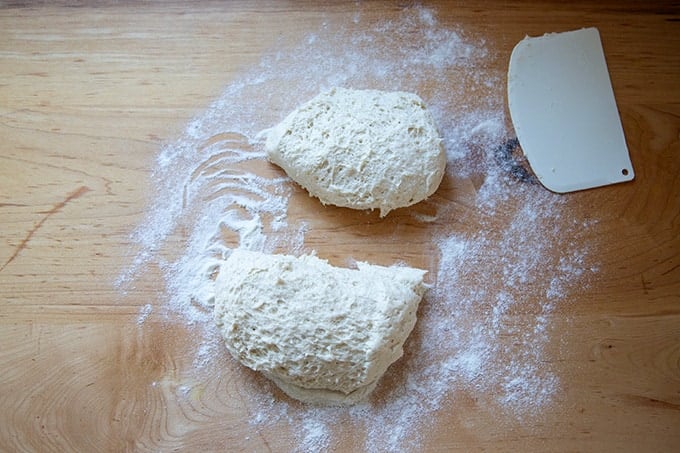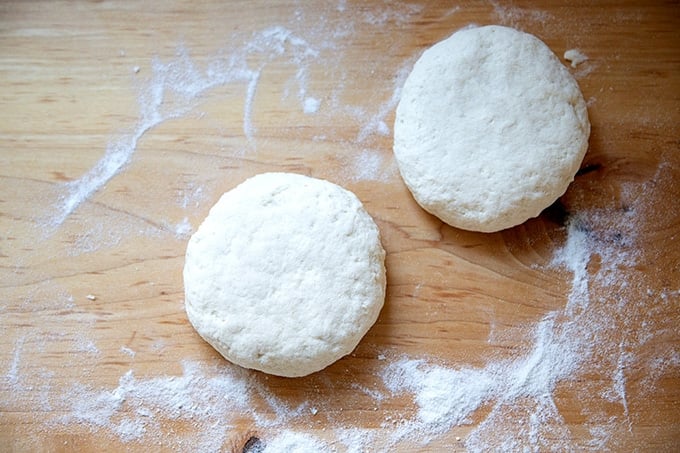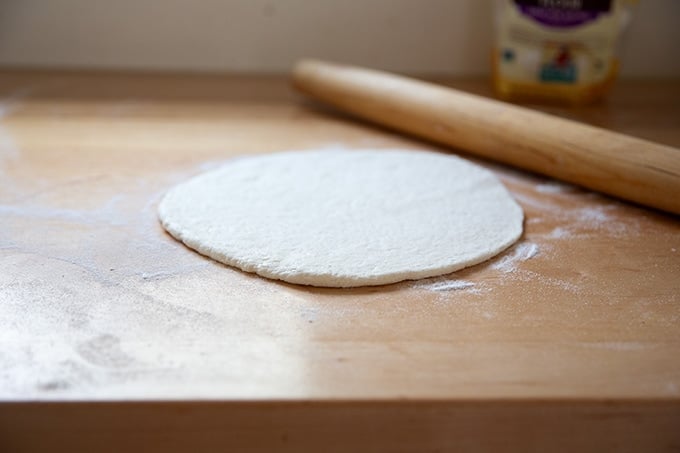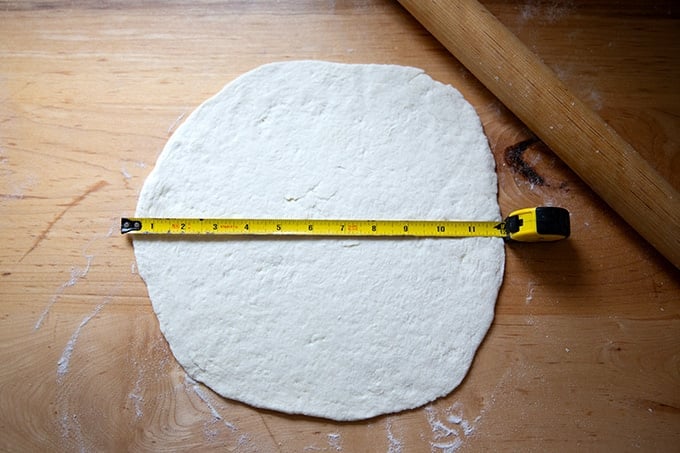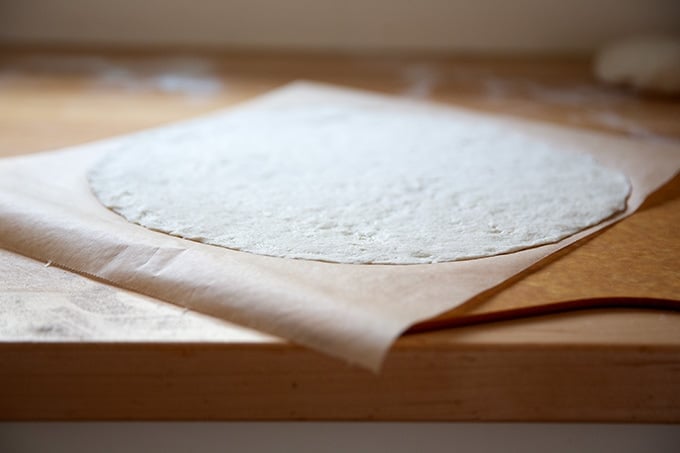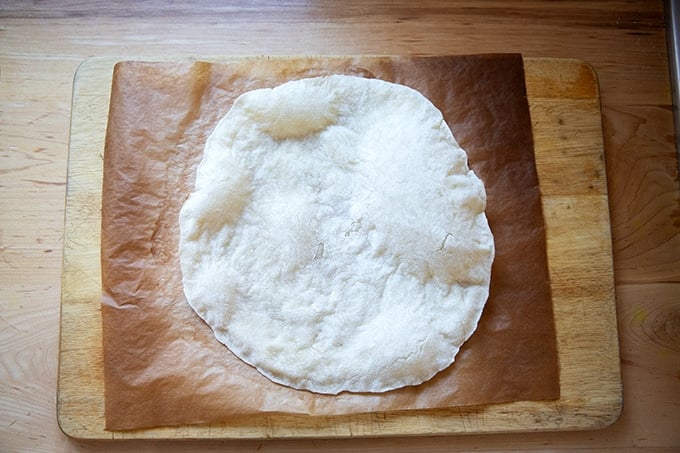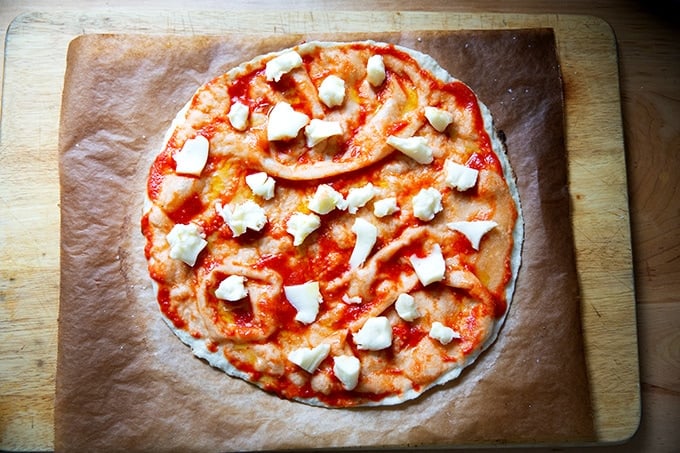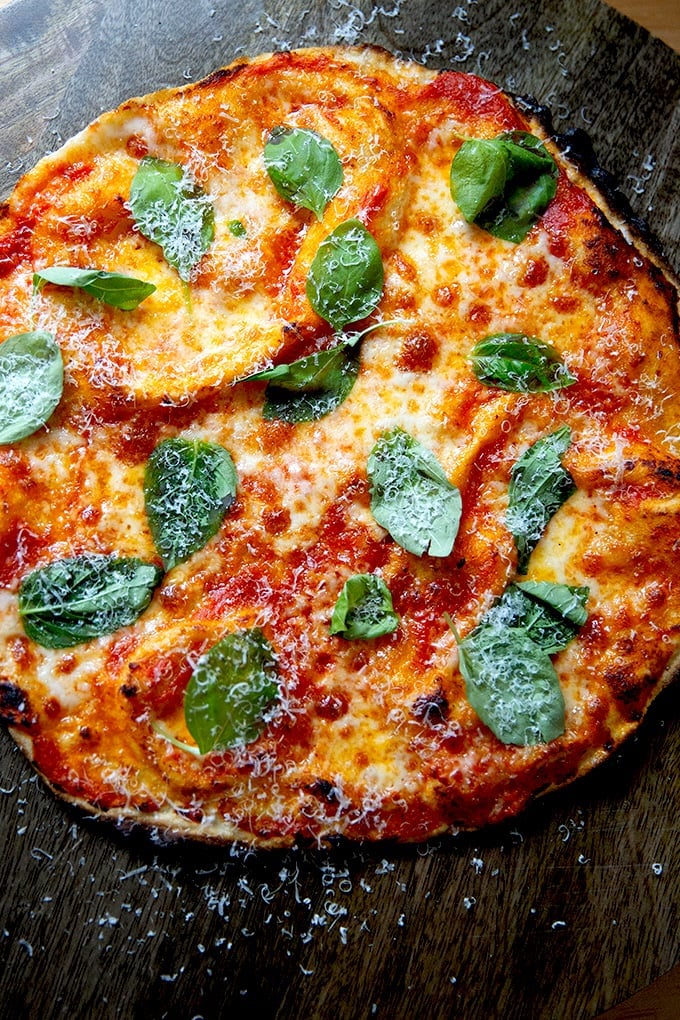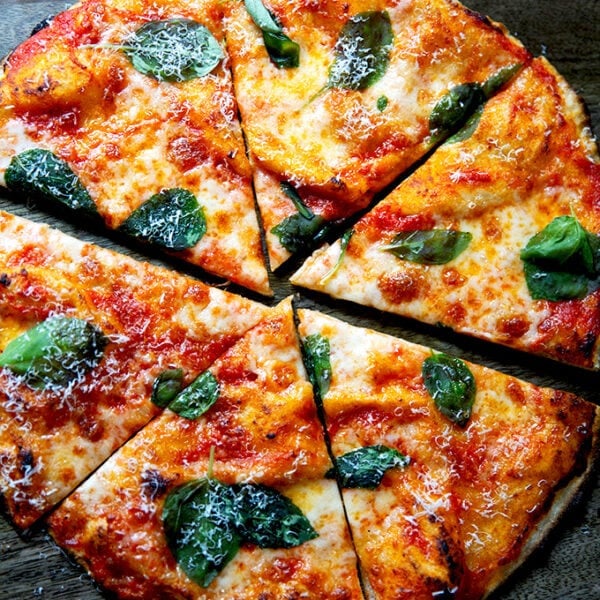Any time I post a recipe for a baked good, whether it’s a muffin or a loaf of bread, I get this question: Can I make this with gluten-free flour? With muffins, cakes and the like, I often say “yes” or “likely yes” because over the years I’ve learned from various commenters that swapping in any number of one-for-one gluten-free flours tends to work seamlessly. But with yeast- and sourdough-leavened items, I am less encouraging, explaining that replicating the chew and feel of breads and pizzas with gluten-free flour isn’t as easy as swapping in gluten-free flour. Gluten-free breads need a little bit more help, often in the form of eggs, stabilizers, and thickeners for structure. Moreover, all gluten-free flours absorb water differently. When working on the gluten-free pizza crust recipe for Pizza Night, I quickly learned that using the same amount of water with one brand of gluten-free flour would not work the same as with another: one might resemble a soupy mess and another a stiff, stodgy mass. And so for Pizza Night, I wrote a recipe for a specific brand of gluten-free flour that I love, which I can’t wait for you to have … in April. In the meantime, I’ve written another recipe or actually King Arthur Baking did — I’m using the recipe nearly verbatim included on the back of the King Arthur Gluten-Free Pizza Flour bag: I use more salt, and rather than shape my rounds Neapolitan-style with a puffy outer rim, I roll them thinly and parbake them, which produces a pizza with a thin and crisp crust. Friends, I think you’ll be so pleased by the texture, flavor, and overall likeness to the real thing of this gluten-free pizza. KA’s gluten-free pizza flour is widely available, the dough comes together in no time, and it rises quickly. The shaped dough rounds can be stored in the fridge for at least a week.
Tips for Success
Use the right flour: As noted above, this recipe is specifically formulated to work with KAF’s Gluten-Free Pizza Flour. I find mine at Hannaford’s, and I’ve seen it at other supermarkets as well. This recipe will not work as written with other gluten-free flours. Use a scale to measure: You will not be measuring accurately if you use measuring cups and spoons, and in turn, you will not be able to troubleshoot in a meaningful way should the recipe not work out for you. Watch the video above: The texture of the dough upon being mixed will not feel familiar: it’s very wet, more like a thick batter. The dough in fact is 121% hydration — yes, you’re reading that correctly: there is more water by weight (284 grams) than flour (233 grams).
Gluten-Free Pizza Crust, Step-by-Step
Gather your ingredients: For best results, use a scale to measure everything out: First, place the dry ingredients in a large bowl: Whisk them together: Add the water and olive oil: And stir with a spatula until you have a very wet mass: Cover the bowl and let rise for 2-3 hours … … or until doubled in volume: Turn the dough out into a lightly floured (using rice flour or other gluten-free flour) work surface: Divide the dough into two equal portions: Then ball up each portion: Gently roll out the portion … into roughly a 12-inch round: Transfer it to a parchment-lined peel and pinch the edges: Parbake on a preheated Baking Steel (ideally) or pizza stone for 2 minutes: It will puff up in spots. Gently deflate those spots: Top with tomato sauce and mozzarella as well as a drizzle of olive oil and a pinch of sea salt: Return to the oven for 4-5 minutes or until blistered to your liking: Shower with fresh basil and shave Parmigiano Reggiano over the top, if you wish. Cut and serve: This is a roasted wild mushroom, kale, and crème fraîche gluten-free pizza, the recipe for which you can find in my pizza newsletter, Pizza Every Friday: 4.8 from 5 reviews If you’re looking for the mushroom- and kale-topped gluten-free pizza, find it here.
Important Notes:
This recipe is specifically formulated to work with KAF gluten-free pizza flour. It very likely will not work with other varieties of gluten-free flour without making adjustments to the amount of water. You can order this flour online or find it in your grocery store — I’ve seen it at Hannaford’s and other supermarkets. Note: KAF’s gluten-free flour uses gluten-free wheat starch, a common ingredient in gluten-free foods. You can read more about it on the National Celiac Association’s website, which says: “Wheat starch is simply a starch made from the processed endosperm of the wheat grain. Gluten-free wheat starch has had the gluten (a protein) washed out to a trace level, making it safe for people on a gluten-free diet.” That said, if you have a wheat allergy, you should avoid products containing wheat starch. Please invest in a scale before attempting this recipe. You will not be measuring accurately if you use measuring cups and spoons, and in turn, you will not be able to troubleshoot in a meaningful way should the recipe not work out for you. Salt: If you are using Morton Kosher salt or fine sea salt, use half as much by volume (or the same amount by weight). Lukewarm water: To create lukewarm water, combine 1/4 cup (56 g) boiling water with 1 cup (228 g) room-temperature or cold tap water.
Equipment:
Baking Steel Pizza Peel Rolling pin parchment paper
No-Cook Tomato Sauce
I have not published this recipe elsewhere on my blog. It’s included in Pizza Night, which is available for preorder now (🎉🍕). Makes 1 quart
1 garlic clove 28-oz can peeled San Marzano tomatoes, such as La Valle or Bianco Di Napoli 1 to 1.5 teaspoons Diamond Crystal kosher salt (or half as much Morton or sea salt) 3 tablespoons extra-virgin olive oil
Place the garlic in a food processor and purée until smooth. Add the tomatoes, 1 teaspoon of the salt, and the olive oil, and purée until smooth. Taste. Add the remaining 0.5 teaspoons salt if desired. Purée again. Transfer to a storage jar and keep in the fridge for at least one week.
